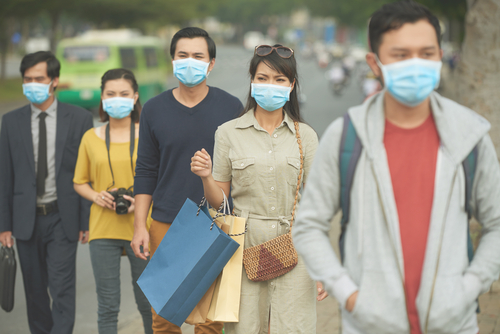
A new report issued by leaders in international health says the world may face great risk from pathogens, including a rapidly moving, highly lethal pandemic projected to kill 50 to 80 million people and wiping out nearly 5 percent of the world’s economy.
High-impact respiratory pathogens, such as an especially deadly strain of influenza, pose particular global risks, says the report titled, “A World At Risk.” Spread through respiratory droplets, these pathogens can infect a large number of people very quickly and with transportation infrastructure, move rapidly across multiple geographies.
These were some of the warnings issued in the annual report of the Global Preparedness Monitoring Board, an independent advocacy body made up of political leaders, heads of agencies, and experts, led jointly by Gro Harlem Brundtland, the former Prime Minister of Norway and Director-General of the World Health Organization and Elhadj As Sy, Secretary-General of the International Federation of Red Cross and Red Crescent Societies. Co-convened in May 2018 by the World Bank Group and the World Health Organization, the board builds on the work of the Global Health Crises Task Force and Panel, created by the United Nations Secretary-General in the wake of the 2014-2016 Ebola epidemic.
The goals of the board are to:
• assess the world’s ability to protect itself from health emergencies;
• identify critical gaps to preparedness across multiple perspectives;
• advocate for preparedness activities with national and international leaders and decision-makers.
The board’s aim is to complement and enhance existing accountability structures of the World Health Organization, the United Nations, the World Bank and other stakeholders. It urges political action to prepare for and mitigate the effects of global health emergencies.
“For too long, we have allowed a cycle of panic and neglect when it comes to pandemics, we ramp up efforts when there is a serious threat, then quickly forget about them when the threat subsides. It is well past time to act,” wrote the authors of the report.
The experts say that the G7, G20 and G77 Member States and regional intergovernmental organizations must follow through on their political and funding commitments for preparedness and agree to routinely monitor progress during their annual meetings.
Besides examining the effects of natural pathogens, the board also warned of the potential threats of scientific developments that create disease-causing microorganism to be engineered in laboratories.
“Should countries, terrorist groups, or scientifically advanced individuals create or obtain and then use biological weapons that have the characteristics of a novel, high-impact respiratory pathogen, the consequences could be as severe as, or even greater, than those of a natural epidemic,” the authors of the report wrote.
In general, national capacities are not well developed for research and development, including during outbreaks, as well as for deployment of vaccines, therapeutics, diagnostics, and other medical countermeasures, as well as creating new vaccine manufacturing methods. More resources have gone into vaccines, basic research and therapeutics than into diagnostic advances, the report says.
Trust in institutions is also eroding. Governments, scientists, the media, public health, health systems and health workers in many countries are facing a breakdown in public trust that is threatening their ability to function effectively. The situation is exacerbated by misinformation that can hinder disease control communicated quickly and widely via social media, the authors noted.
The report did highlight successes within the global health community. Rapid detection, isolation and treatment of recent Ebola cases in Uganda reflect better preparedness planning and investments. In addition, nine countries neighboring the eastern Democratic Republic of the Congo have enhanced their preparedness efforts.
Political will, financial investment and health system improvements lead to results, according to the report. For example, the Republic of Korea successfully contained a second potential MERS outbreak in 2018. And before the 2014-2016 outbreak of Ebola in West Africa, Nigeria implemented an epidemic preparedness infrastructure that resulted in rapid control of Ebola cases and cost savings. Recent improvements in India’s health system helped that country identify and contain the deadly Nipah virus diagnosed in Kerala in May 2018.
As for financing, the World Health Organization established the Contingency Fund for Emergencies (CFE) to respond immediately, within the critical first 24-48 hours, to a disease outbreak and humanitarian crises. The CFE has enabled WHO to respond rapidly to 70 separate events in 48 countries. And the World Bank developed the Pandemic Emergency Financing Facility to make pay-outs early during an outbreak cycle – before it becomes a pandemic – through two avenues, insurance and cash.
“Leaders at all levels hold the key,” wrote the authors. “It is their responsibility to prioritize preparedness with a whole-of-society approach that ensures all are involved and all are protected.”




